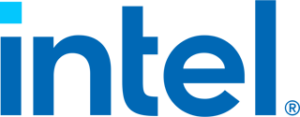Vodafone: 30 percent of European network will be Open RAN by 2030
Open RAN, while certainly a set of technologies, is often described as a movement—a vision of collaboration that will enable a mix and match approach to radio systems that, if done correctly, can cut operator TCO, foster a more robust vendor pool and enable new types of innovation that benefit network consumers. In addition to the description of Open RAN as a movement, it’s also often characterized as encompassing an ecosystem of hardware and software specialists, system integrators and operators engaged in an exchange of ideas in pursuit of a common goal.
Vodafone is one of the biggest global operators to embrace Open RAN and has set a target of deploying the disaggregated radio systems in 30% of its European footprint by the end of the decade. The company has also called in a whitepaper for a new, more collaborative approach to lab-based multi-vendor integration, pre-staging and ongoing network operations support.
Speaking to RCR Wireless News, Vodafone’s Paco Martin, head of Open RAN, picked up the cooperative integration necessary to make the technology scale. “Collaboration is key for this to be successful. We are very busy on rollouts which essentially means planning for more because we need to make sure we support the technology with the rollouts and we make sure that money flows into the system.” Other work is focused on silicon development and otherwise driving advancement in Open RAN. “We are…very busy supporting the Open RAN vendor ecosystem, trying to get the right level of maturity.”
For Open RAN, “that train has certainly left the station”
For its part Mavenir has been a very active member of the Open RAN ecosystem and Senior Vice President of Business Development John Baker a major individual contributor to fostering mutli-party engagement. “Open RAN is realy gaining momentum in the industry,” he said. “I think the biggest challenge that I’ve seen still at conference and in marketing information is just generally the confusion…that’s being thrown out there to protect incumbent positions, protect monopoly positions, about simply even the definition of what Open RAN is.”
Baker drew a distinction between virtual RAN, cloud-based RAN–both implementations that can be proprietary or aligned with O-RAN Alliance open interface specifications–and Open RAN and open, virtual RAN. Beyond a precise technical definition, Baker noted the spirit or Open RAN involves a multi-vendor radio system. “We’ve done probably 11 integrations now with different companies on radios…When you actually have a multi-vendor system, you get some of these nuances, but that’s what the ecosystem is about-help each other debug the problems and come up with a more reliable and a more secure supply chain. So any single vendor that comes along that says, ‘I’ve got Open RAN in my solution, but it’s my solution only,’ then I don’t believe that’s open and I push back on that aspect.”
Appledore Consulting’s Robert Curran called out the description of ecosystem as an “ecological analogy” meaning something that’s “vibrant, adaptive and constantly changing, and that’s what makes the system as a whole work. It’s not that everything is fixed in place. There’s a constant interplay between the elements of an ecosystem. It’s not a supplier hierarchy and so what we should expect to see from an ecosystem is that activity.”
From his point of view as industry analyst, Curran sees Open RAN sitting at the intersection of disaggregation as a concept, opening up interfaces, virtualization and softwarization. “Open RAN is another slice through all those at the same time. It is an opportunity and it is complicated in the sense that it’s a big opportunity, but I think that’s what we are seeing.” Another thing Curran noted tying together ecosystem and activity is knowledge generation and sharing. “When people talk about things like CI/CD and velocity and service lifecycles and so on, we have some good reference points. [Operators] have pulled a collaborative set of vendors along with them and I think there’s a lot of learning going on.”
When it comes to Open RAN, prove it or lose it
To Curran’s comment around softwarization and Martin’s reference to broad vendor engagement, Baker picked up the thread to point out that given the nature of Open RAN, if a vendor doesn’t perform to expectations, they risk rapidly losing a piece of business. “I think it keeps us on our feet and keeps us aware, given that we’re disaggregated platforms, it’s virtualized, containerized, we can be removed out of a network tomorrow if we don’t perform. So I think that’s the one big change that is already seen in the ecosystem is that we have to do what we say we’re going to do and deliver what we promise. The speed at which some of these networks are now being built using virtualized, containerized platforms as such, there’s no assumption you’ll be there forever. You’ve got to prove your worth and demonstrate your wares.”
Back to Martin on Vodafone’s Open RAN timeline and what it’ll take to hit that target. “I think to get there in 2030, you need to start virtually now. We are very busy building our plans to get there which means working in multiple countries with this, making sure we understand very well the ecosystem of suppliers. We are working today with over 50 companies across all areas in Open RAN. And you need to make sure who the best ones are, and you also need to be able to select a few of them but not all of them because then it becomes too crowded and too complex. We need to make sure we have solid plans. We cannot delay them too much.”


